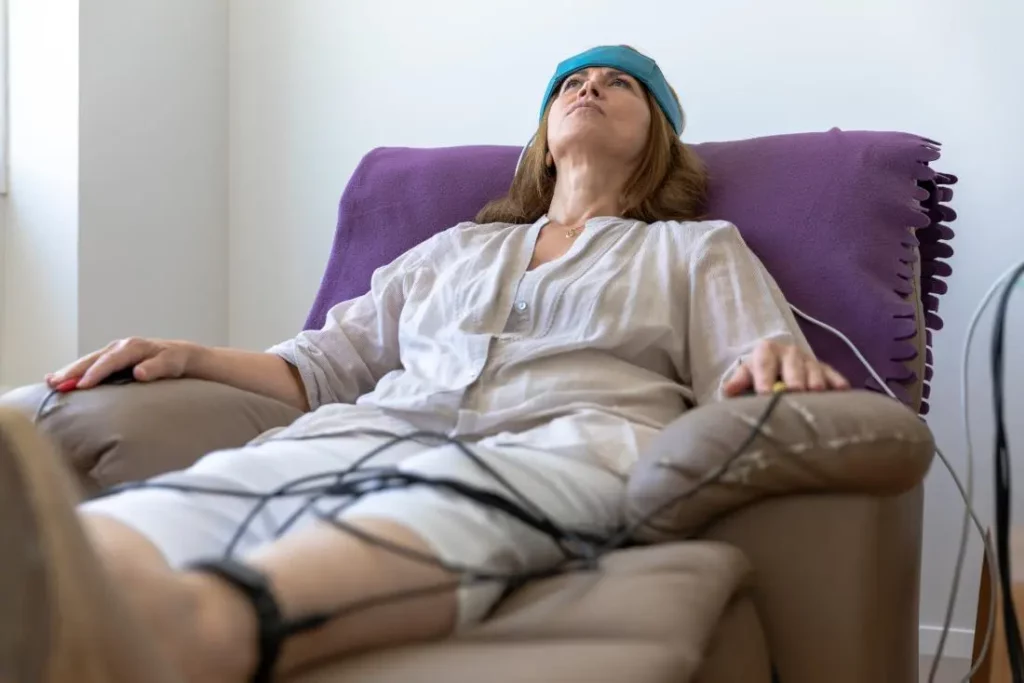The Brain’s Hidden Stress Signature
Every human brain is as unique as a fingerprint. Yet traditional talk therapy or pharmacological interventions often take a one-size-fits-all approach to mental health. What if we could access real-time data from the brain itself—like a mirror reflecting its moment-to-moment struggles—and build therapy around that information? This is the promise of personalized neurofeedback, a rapidly emerging field where brain activity guides individualized mental wellness protocols.
What Is EEG Neurofeedback?
Electroencephalography (EEG) neurofeedback is a non-invasive technology that maps electrical brain activity using sensors placed on the scalp. These sensors detect the brain’s oscillating electrical patterns—delta, theta, alpha, beta, and gamma waves—and translate them into feedback that helps the user self-regulate. By watching how their brain reacts to stimuli in real time, users can learn to consciously alter their mental state through guided training.
The Concept of a Neural Fingerprint
Just as your fingerprint distinguishes you biologically, your brainwave patterns reflect your psychological tendencies. One person’s anxiety may manifest as excessive high-beta activity in the frontal cortex, while another’s depression may correlate with low alpha power in the posterior regions. EEG-based neurofeedback creates a map of this activity—a neural fingerprint—and builds a therapeutic protocol tailored to correct individual imbalances rather than applying generalized interventions.
How It Works in Real Life
During a neurofeedback session, users typically sit in a relaxed setting with EEG sensors attached to their scalp. They might watch a movie, play a video game, or listen to music. The system adjusts what they experience based on how their brain responds: if focus increases, the screen brightens; if stress spikes, the sound might fade. This form of operant conditioning gently teaches the brain to move toward a more regulated state.
Targeting Anxiety and Stress
Neurofeedback has shown significant promise in the treatment of anxiety and chronic stress. Many anxious individuals exhibit excessive high-frequency brainwave activity, especially in the right prefrontal cortex. Tailored neurofeedback sessions can encourage more balanced brain activity by rewarding slower wave patterns linked to calm and focus. Over time, this conditioning may reduce hyperarousal and reactivity, building a more resilient baseline state.

The Science Behind Personalization
Standard neurofeedback protocols often begin with a QEEG, or quantitative EEG brain map. This high-resolution scan identifies deviations from normative brain activity, providing clinicians with a visual guide to the client’s unique stress signatures. Personalized therapy is then crafted—not only addressing symptoms but uncovering the root of dysfunctional neural patterns. By adjusting feedback thresholds and training focus areas, practitioners can fine-tune the neurofeedback to the individual’s specific needs.
Emotional Regulation Through Brain Training
EEG-based neurofeedback is particularly powerful when it comes to emotional regulation. When someone with trauma or chronic emotional dysregulation engages in feedback, they can observe the shift in their brain as they process distress. This visual and auditory input can empower them to recognize internal cues of overwhelm, making emotional regulation less abstract and more achievable through practice.
From ADHD to PTSD: Who It Helps
Beyond anxiety, personalized neurofeedback is being used to support individuals with ADHD, PTSD, insomnia, depression, and even migraine. In ADHD, for example, underactive frontal beta waves are often observed. Targeted training can enhance these frequencies, improving attention and impulse control. In PTSD, the brain often remains stuck in hypervigilant loops. Carefully crafted protocols can help restore a sense of safety in the nervous system without needing to relive trauma.
Bringing AI Into the Loop
Artificial intelligence is playing a growing role in advancing neurofeedback. Algorithms can now learn from thousands of EEG patterns and outcomes, predicting which protocols are most effective for specific neural profiles. AI-enhanced neurofeedback platforms offer adaptive sessions, where feedback is not static but evolves as the user improves, enhancing efficacy and reducing treatment time.
Integrating Breath, Meditation, and Movement
Personalized EEG therapy is increasingly combined with other mind-body practices. Breathwork, meditation, and somatic movement can amplify neurofeedback gains by aligning physiological rhythms with neural balance. For example, practicing deep diaphragmatic breathing during sessions can enhance alpha brainwave production. Similarly, somatic tracking exercises help bridge bodily awareness with brainwave regulation, making the therapy holistic rather than mechanistic.
Limitations and Ethical Considerations
While promising, EEG-based neurofeedback is not a magic bullet. Not everyone responds equally, and poorly trained practitioners or misinterpreted QEEG results can lead to frustration or even symptom worsening. Moreover, collecting neural data raises ethical issues around privacy. In an age of digital health, users must be assured that their neural signatures remain confidential and are not commodified or misused.
The Future of Mental Health Customization
The dream of truly personalized mental health care is coming into view. EEG-based neurofeedback offers a model of precision psychiatry—where treatment adapts not only to diagnosis but to individual neural function. As systems grow more portable, affordable, and user-friendly, we may soon see neurofeedback apps integrated into smart headbands, bringing the therapist’s insights into the home.
Neurofeedback for the Self-Aware Generation
Younger generations are increasingly drawn to data-informed wellness. From tracking sleep cycles to analyzing HRV, Gen Z and millennials want to see what’s happening inside. Neurofeedback caters to this demand by offering a window into the mind’s electrical world. For those burned out by talk therapy or disillusioned with medications, EEG offers a fresh, empowering alternative.
Closing the Gap Between Brain and Behavior
Ultimately, the power of EEG-based therapy lies in its ability to turn the invisible into the actionable. It transforms vague notions of “feeling anxious” or “being distracted” into visible data—then trains the user to shift those patterns at will. In doing so, neurofeedback closes the gap between brain and behavior, giving people tools to write a different story with their nervous systems.










































